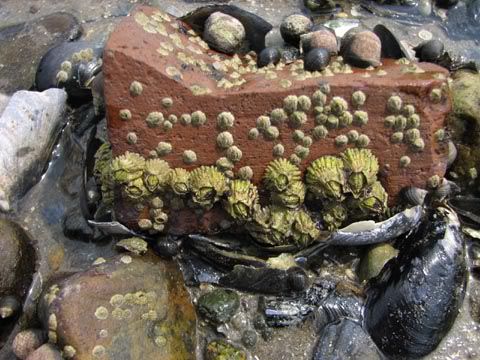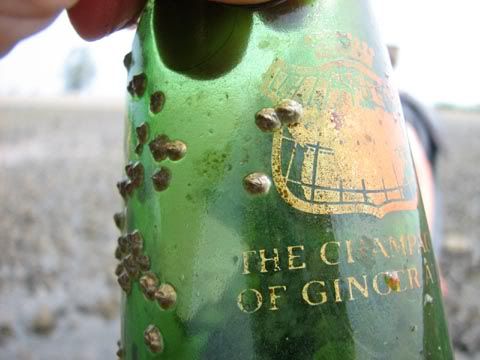365 Urban Species. #186: Northern Acorn Barnacle

Photos by cottonmanifesto. Location: Castle Island Beach (low tide).
Urban species #186: Northern acorn barnacle Semibalanus balanoides
Barnacles are a staple of life at the shore. On pilings, wharves, boat hulls and rocks, a white crust of shells accumulates. Most people pay them no mind--they certainly don't think of them as animals. Or if they do, they consider them to be some kind of lesser mollusk, notable only for the drag they place on the vessels on which they cling. In fact, barnacles are essentially shrimp, that glue their heads permanently to some object, surround themselves with armor, and spend their lives collecting plankton with their feet. When the tide is out, they shut the plates of their armor tight for hours, patiently waiting for submersion to return. This success of this strange way of life is obvious, when one thinks of how ubiquitous barnacles truly are.
The northern acorn barnacle is the most common barnacle throughout its highly urbanized range, which includes New England and Northern Europe. Like many species of barnacle, it is hermaphroditic. It accomplishes the awkward act of fertilizing its neighbors with the use of a penis many times longer than its own body length. Fertilization is internal, and (reminiscent of their relatives, the isopods) results in live birth. Their larvae are free-swimming planktonic animals that are potential prey for a myriad of other animals, including whales and even other barnacles. Adult barnacles are preyed upon by sea stars, predatory snails, and occasionally gulls.

These youngsters may not have much luck, attached to this fragment of a ginger ale bottle, tumbling in the surf.